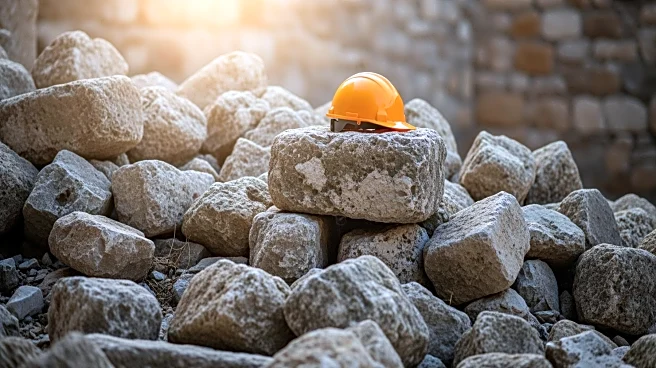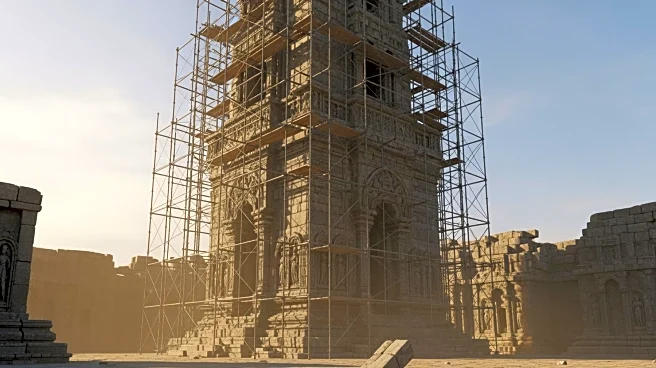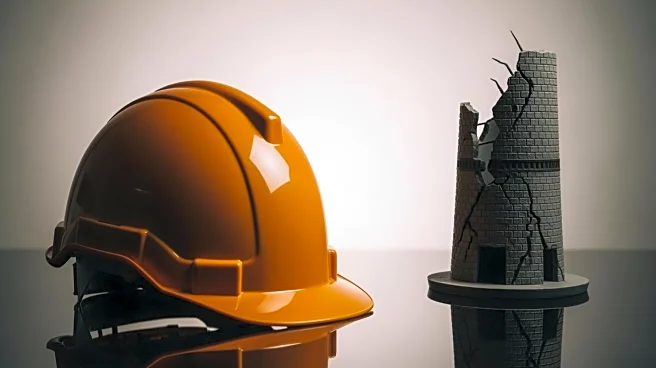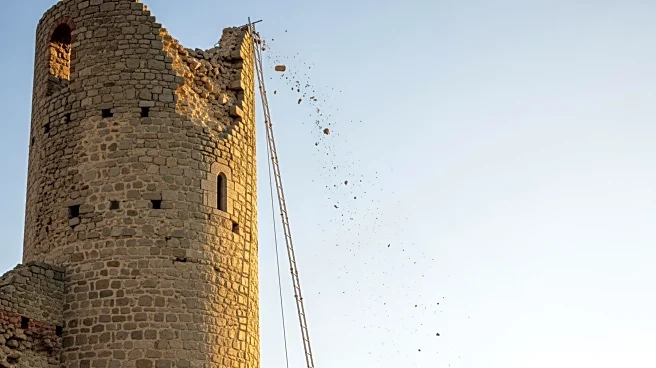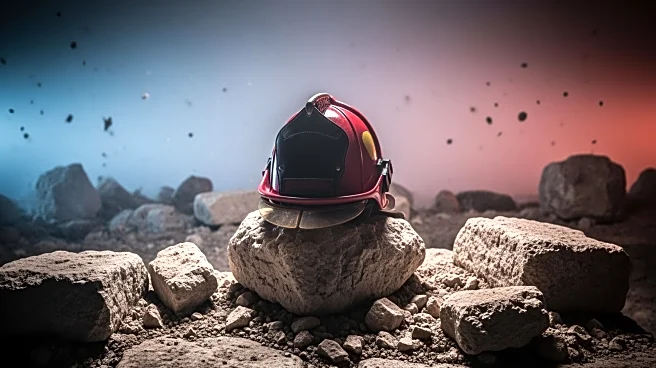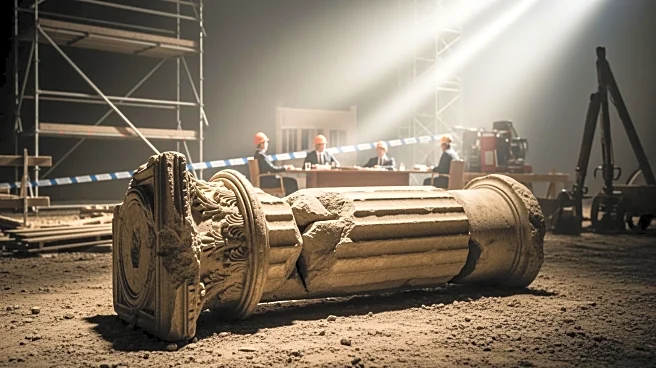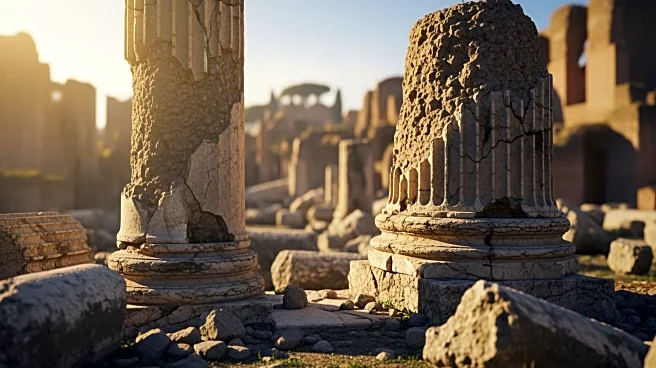What's Happening?
A worker tragically died after being trapped for 11 hours in a partially collapsed medieval tower in Rome. The incident occurred during renovation work on the Torre dei Conti, a structure dating back to the 13th
century. Firefighters managed to extract the worker, identified as Octav Stroici, but he succumbed to his injuries shortly after. The rescue operation was complex, involving cranes and drones to navigate the unstable structure. Premier Giorgia Meloni expressed condolences to Stroici's family and colleagues. The tower, undergoing an €8 million restoration, had been closed since 2007. The collapse has prompted an investigation by Italian prosecutors into potential negligent disaster and injuries.
Why It's Important?
The incident highlights the risks associated with renovating historical structures, especially those with known structural vulnerabilities. The Torre dei Conti's collapse raises concerns about the safety protocols and structural assessments conducted prior to restoration work. This event could lead to stricter regulations and oversight in the restoration of historical sites, impacting future projects across Italy and potentially influencing international standards. The tragedy also underscores the importance of worker safety in construction and renovation projects, prompting discussions on improving safety measures and emergency response strategies.
What's Next?
Italian prosecutors are investigating the incident for possible charges of negligent disaster and injuries. This could lead to legal repercussions for those involved in the restoration project. The investigation may also result in changes to safety regulations and procedures for historical renovations. Additionally, the incident may prompt a review of other ongoing restoration projects to ensure compliance with safety standards. The cultural heritage sector may face increased scrutiny, potentially affecting funding and timelines for similar projects.
Beyond the Headlines
The collapse of the Torre dei Conti serves as a reminder of the delicate balance between preserving historical architecture and ensuring modern safety standards. It raises ethical questions about the responsibility of preserving history while safeguarding human lives. The incident may influence cultural attitudes towards historical preservation, emphasizing the need for advanced engineering solutions to protect both heritage and workers. Long-term, this could lead to innovations in restoration techniques and materials, fostering a safer environment for such projects.
